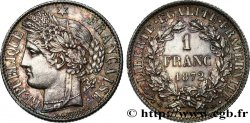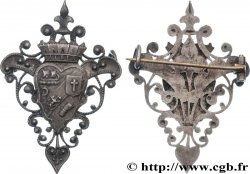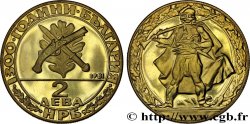fme_1029584 - TERCERA REPUBLICA FRANCESA Médaille, Courage, travail et Patrie, journal Le Matin
35.00 €
Cantidad
Añadir a su cesta

Tipo : Médaille, Courage, travail et Patrie, journal Le Matin
Fecha: 1904
Nombre del taller / ciudad: 75 - Paris
Metal: bronce
Diámetro: 51 mm
Eje de acuñación: 12 h.
Acuñador RIBERON René
Peso: 67,14 g.
Canto: lisse + corne BRONZE
Cuño: corne BRONZE
Comentarios sobre el estado de conservación:
Patine hétérogène avec des traces d’usure, quelques coups et rayures. Taches d’oxydation sur les deux faces et la tranche
Anverso
Titulatura del anverso: ANÉPIGRAPHE.
Descripción del anverso: jeune femme vêtue à l’antique, tenant une palme tendue vers un socle architectural ; végétation. Signé : RENE RIBERON.
Reverso
Titulatura del reverso: COURAGE / TRAVAIL / PATRIE // LE MATIN.
Descripción del reverso: Légende en 4 lignes entre deux lignes haute tension, une palme et une branche de lauriers.
Comentario
Le Matin était un journal quotidien français créé en 1883 et disparu en 1944. Racheté par l'homme d'affaires sulfureux Maurice Bunau-Varilla, il fut l'un des quatre grands quotidiens dans les années 1910 et 1920, tirant un million d'exemplaires à la veille de 1914. Sa diffusion baissa à partir des années 1920, pour ne plus atteindre que 300 000 exemplaires à la fin des années 1930, tandis qu'il s'orienta vers l'extrême-droite, devenant collaborationniste sous Vichy. Il fut interdit de parution à la Libération..
Le Matin was a French daily newspaper founded in 1883 and defunct in 1944. Bought by the shady businessman Maurice Bunau-Varilla, it was one of the four major dailies in the 1910s and 1920s, with a circulation of one million examples on the eve of 1914. Its circulation declined from the 1920s onwards, reaching only 300,000 examples by the end of the 1930s, while it moved towards the extreme right, becoming collaborationist under Vichy. It was banned from publication after the Liberation.
Le Matin was a French daily newspaper founded in 1883 and defunct in 1944. Bought by the shady businessman Maurice Bunau-Varilla, it was one of the four major dailies in the 1910s and 1920s, with a circulation of one million examples on the eve of 1914. Its circulation declined from the 1920s onwards, reaching only 300,000 examples by the end of the 1930s, while it moved towards the extreme right, becoming collaborationist under Vichy. It was banned from publication after the Liberation.








 Informar de un error
Informar de un error Imprimir la página
Imprimir la página Comparte mi selección
Comparte mi selección Haz una pregunta
Haz una pregunta Consignar / vender
Consignar / vender
 Descriptivo
Descriptivo















